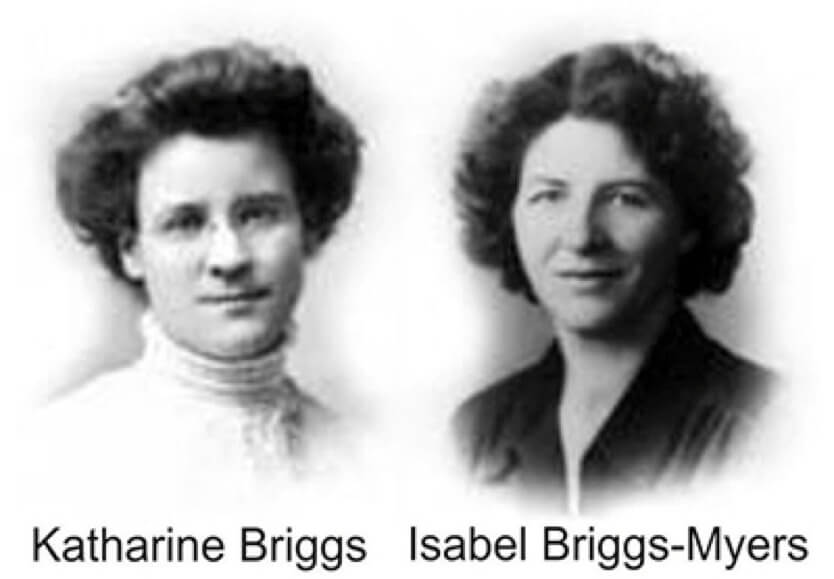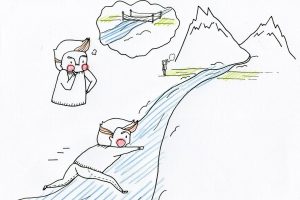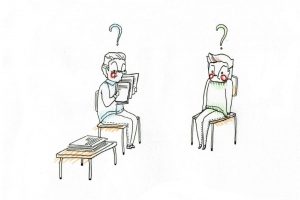The Myers-Briggs personality types indicator it’s a good issue to restart the series about the tools used in coaching and psychology. We’ll review the origins and structure of the MBTI personality model. We can learn about the Myers-Briggs indicator to identify which MBTI personality type is the nearest to each one of us. Also, we will soon compare it with NeuroQuotient , as we have done with the DISC personality model.
Introduction to the MBTI indicator
The MBTI indicator it is the one that most clearly represents a ‘personality type’ model.
The web, of the Myers and Briggs Foundation provides a lot of information. We are going to try to extract the most important. In addition, we introduce something from other sources, such as wikipedia .
The MBTI indicator is a model/tool designed to indicate the psychological preferences about how people perceive the world and make decisions.
It was created by Katharine Cook Briggs and her daughter Isabel Briggs Myers. It is based on the typological theory proposed by Carl Jung ( 1912 Psychology of the Unconscious).
Jung stated that there are different psychological functions through which we experience and interpret the world. There is an original model of Jung and a second adapted by the Briggs ladies that created the first tool.This is why we speak of a model / tool; it is almost impossible to distinguish between the MBTI model and the tool.
The first part is something theoretical. If you want, you can fast forward to the end to try to identify your personality type within the MBTI model.
The MBTI indicator model from Carl Jung
The first version of the model / tool (Briggs Myers Type Indicator) is from 1944 and the second from 1956. Once again there is a coincidence in time when other tools come to light (DISC, Predictive Index …).To better specify the time frame, say that Isabel Briggs Myers died in 1980.
According to Carl Jung, the differences in the way of being, and in behaviour, are due to the different ways in which individuals prefer to use perception and judgment.
Perception refers to how we capture information and become aware of things, people, events or ideas. Judgment refers to the ways to reach conclusions about what we perceive.If people differ in what they perceive and in how they reach conclusions, it is reasonable to think that they will be different in their interests, reactions, values and abilities.
Carl Jung named psychological functions of consciousness to the modes of utilization of perception and judgment.
According to Jung there are two functions of perception of information): Sensing (S) or INtuition (N). According to the preference is to focus on the simple information that one perceives (perception) or to interpret it and adding meaning (intuition).
And two functions of judgment (of decision): Thinking (T) or Feeling (F).According to, when making decisions, the preference is to attend to the logical consistency of the perceived or to focus on people and special circumstances.
These functions are modified by two main types of attitudes (preferred world): Extraversion (E) or Introversion (I), depending on whether one prefers to focus on the outside world or inside.
The final Myers-Briggs Type Indicator model
Jung theorized that dominant functions characterize consciousness, while their opposites are repressed and characterize unconscious behaviour.
From the combination of the two types of attitudes with each of the four functions obtained eight psychological types.
Briggs Myers added a fourth dichotomy: Judging (J) or Perceiving (P), according to, when dealing with the outside world, the preference is in having things decided (preference for judgment functions) or being open to new information and options (preference for perception functions).
Finally, personality type is defined by preference in each one of the dichotomies.There are 16 personality types in MBTI.Each of them is expressed by a four-letter code;the initials of the different functions.
The Myers-Briggs Type Indicator with a very simple tool
In the following tables, from Wikipedia, you can see the summary of the different functions and try to find out which our personality type is.

To make it easy we transfer this very interesting map in some tables.
Let’s then go to try to identity our personality type according the Myers-Briggs, MBTI indicator.
Once we have done it, we answer the following questions.
Does it fit you?
Which difficulties have you met?
What´s Your Personality type?
Let’s use the following questions to determine the four letters of our Myers-Briggs type, MBTI indicator. In each pair of letters of each question, we choose the side that seems most natural to us, even if we do not agree with all the sentences on that side.
Then, let’s join the 4 letters (in the order of the questions) and look at the final picture of the corresponding personality profile.
1. Are you outwardly or inwardly focused? If you:
| Could be described as talkative, outgoing | Could be described as reserved, private. |
| Like to be in a fast-paced environment. | Prefer a slower pace with time for contemplation. |
| Tend to work out ideas with others, think out loud. | Tend to think things through inside your head. |
| Enjoy being the center of attention. | Would rather observe than be the center of attention |
| Then you prefer E Extraversion | Then you prefer I Introversion |
2. How do you prefer to take in information? If you:
| Focus on how the reality of how things are. | Imagine the possibilities of how things could be |
| Pay attention to concrete details and facts. | Notice the big picture, see how everything connects. |
| Prefer ideas that have practical applications. | Enjoy ideas and concepts for their own sake. |
| Like to describe things in a specific, literal way | Like to describe things in a figurative, poetic way |
| Then you prefer S Sensing | Then you prefer N IntuitioN |
3. How do you prefer to make decisions? If you:
| Make decisions in an impersonal way, using logical reasoning. | Base your decisions on personal values and how your actions affect others. |
| Value justice, fairness. | Value harmony, forgiveness |
| Enjoy finding the flaws in an argument. | Like to please others and point the best in people. |
| Could be described as reasonable, level-headed. | Could be described as warm, empathetic |
| Then you prefer T Thinking | Then you prefer F Feeling |
4. How do you prefer to live your outer life? If you:
| Prefer to have your matters settled. | Prefer to leave your options open |
| Think rules and deadlines should be respected. | See rules and deadlines as flexible |
| Prefer to have detailed, step-by-step instructions. | Like to improvise and make things up as you go. |
| Make plans, want to know what you´re getting into | Are spontaneous, enjoy surprises and new situations |
| Then you prefer J Judging | Then you prefer P Perceiving |
Now join the four letters you have chosen in order 1,2,3,4 and look at your personality type in the following table:
Does it fit?What difficulty do you have?
| ISTJ Responsible, sincere, analytical, reserved, realistic, systematic. Hardworking and trustworthy, with sound practical judgment. | ISFJ Warm, considerate, gentle, responsible, pragmatic, thorough. Devoted caretakers who enjoy being helpful to others. | INF JIdealistic, organized, insightful, dependable, compassionate, gentle.Seek harmony and cooperation, enjoy intellectual stimulation. | INTJ Innovative, independent, strategic, logical, reserved, insightful. Driven by their own original ideas to achieve improvements. |
| ISTP Action-oriented, logical, analytical, spontaneous, reserved independent.Enjoy adventure, skilled at understanding how mechanical things work. | ISFP Gentle, sensitive, realistic, helpful, flexible, nurturing.Seek to create a personal environment that is both beautiful and practical. | INFP Sensitive, creative, idealistic, perceptive, caring, loyal.Value inner harmony and personal growth, focus on dreams and possibilities. | INTP Intellectual, logical, precise, reserved, imaginative, flexible. Original thinkers who enjoy speculation and creative problems solving. |
| ESTP Outgoing, realistic, action-oriented, curious, versatile, spontaneous. Pragmatic problem solvers and skillful negotiators. | ESFP Playful, enthusiastic, friendly, spontaneous, tactful, flexible.Have strong common sense, enjoy helping people in tangible ways. | ENFP Enthusiastic, creative, optimistic, spontaneous, supportive, playful. Value inspiration, enjoy starting new projects, see the potential in others. | ENTP Inventive, enthusiastic, enterprising, strategic, versatile, inquisitive.Enjoy new ideas and challenges, value inspiration |
| ESTJ Efficient, outgoing, analytical, systematic, realistic, dependable. Like to run the show and get things in an orderly fashion. | ESFJ Friendly, outgoing, conscientious, organized practical, reliable.Seek to be helpful and please others, enjoy being active and productive. | ENFJ Enthusiastic, organized, diplomatic, caring, responsible, idealistic. Skilled communicators who value connection with people. | ENTJ Strategist, outgoing, logical, independent, efficient, ambitious.Effective organizers of people and long-range planner. |
After doing the exercise, we want to repeat the before questions?
Does the type you choose fits you?
Which difficulties have you met?
Probably your most important difficulty is related with the fact that the Myers-Briggs types indicator are like closed cells. During our live we are in evolution and we acquire traits from other types. It’s quite difficult to say we are, exactly, one type. On the other hand, this is the problem with all the personality types models.




